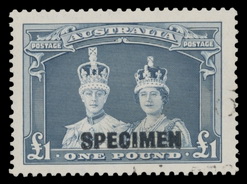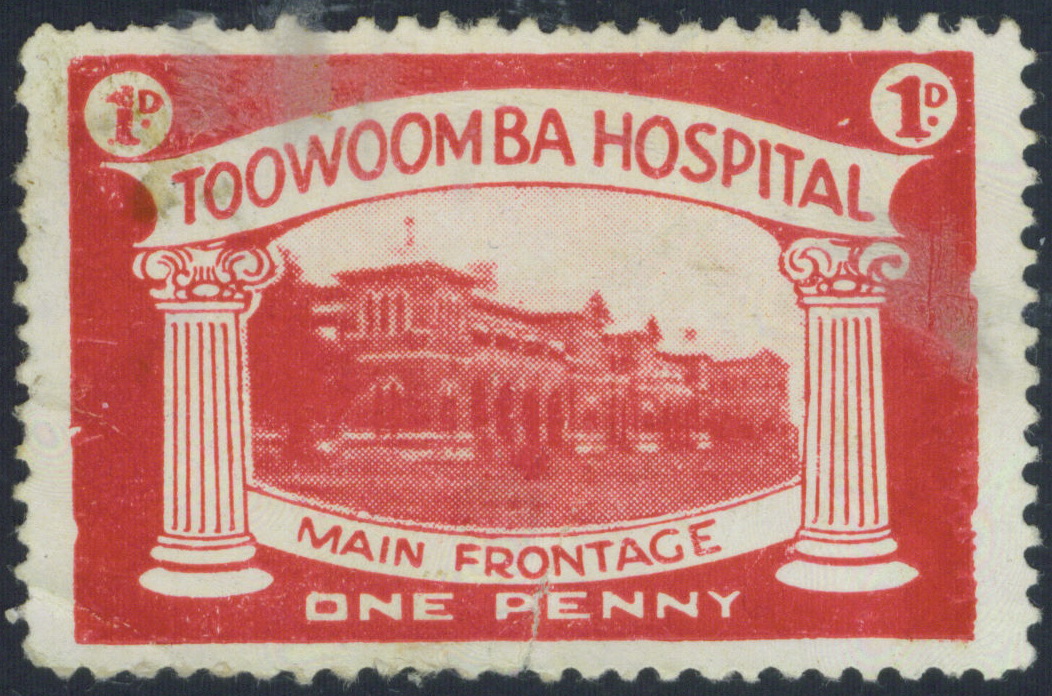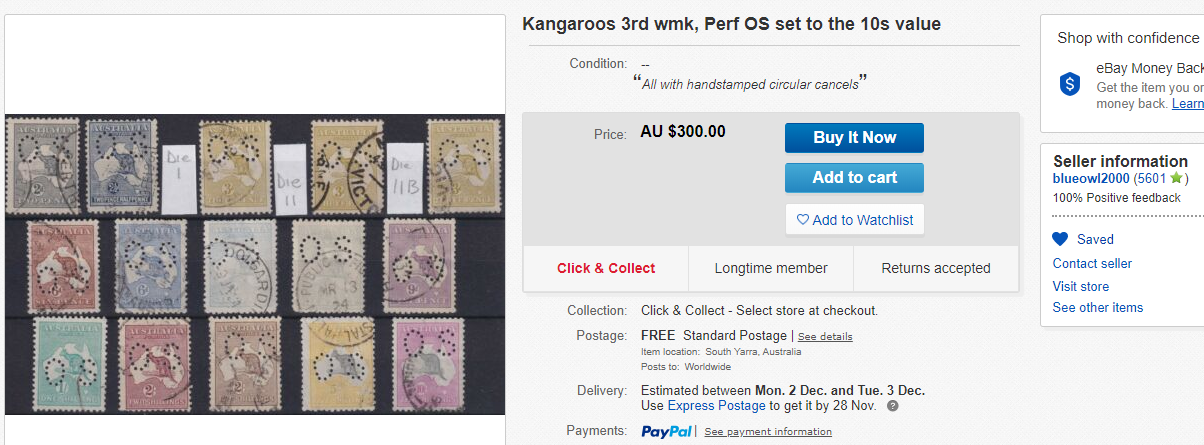Detecting Forged OS Punctures on Australian Commonwealth Issues
Salting a LotOne of the most common ways of passing off a forgery via Ebay is to salt it into a bulk lot of genuine stamps. The idea behind this is to let potential purchasers think they have found a "bargain", and if the stamp is a reasonably good forgery, the fact that other stamps in the lot are genuine tends to disguise the one that isn't. But this idea falls down when the forgery is a poor one - putting it in a batch of genuine punctures can make it stand out like a sore thumb. Consider this lot:
|
A Sophisticated ForgeryMany collectors would consider an OS puncture "on piece" to be genuine without questioning it, particularly if it is correctly tied. And many collectors would be wrong. Consider the lot shown at right - note that none of the stamps have an OS puncture. The lot was purchased from an Ebay seller. Subsequently, this individual item (below left) was offered on Ebay by seller bonjoh7:
|
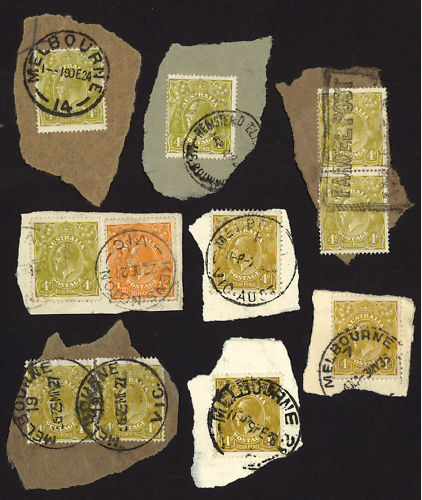
|
This is just a representative sample of bonjoh7's treatment of the original lot - other stamps from the lot were similarly treated, by being removed from the backing paper, having an OS puncture applied, and then being re-attached so that the postmark elements lined up. And the moral - even though a stamp looks "impossible" to forge, it isn't. Being on piece (or on cover) is no guarantee that the puncture is genuine. If you search Stampboards (www.stampboards.com) for bonjoh7, you will see that this ebay id is just another of many ids associated with The Sydney Forger. |
And another, this time not quite as sophisticatedThe two stamps on the right were offered for sale by Velvet Collectables (a now-defunct dealership) in their Auction number 30, held 22 March 2014. It was Lot 1354, and the image shown is taken from the catalogue, hence the rather bright shades. It is impossible to understand how a supposedly-reputable dealer would offer the 1d green stamp in such condition without indicating it has a forged puncture. When the two punctures are compared, the absurdity of the 1d green puncture is clear. While some auction houses will protest that they cannot check the content of every lot, in this case how many pairs of eyes would have seen an illustrated lot during catalog preparation? Quite a few, I'd venture. So this example points to another important rule when purchasing OS perfins - believe your eyes. If it doesn't "look right", then it probably isn't. |
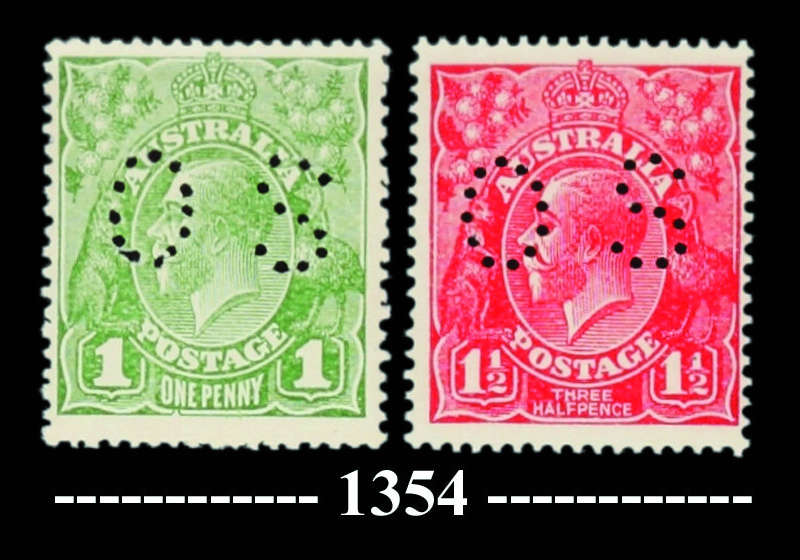
|
 |
 |
